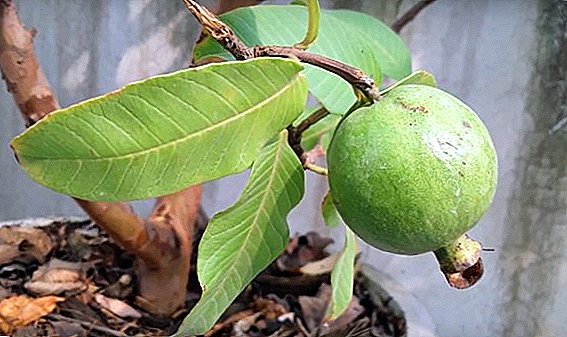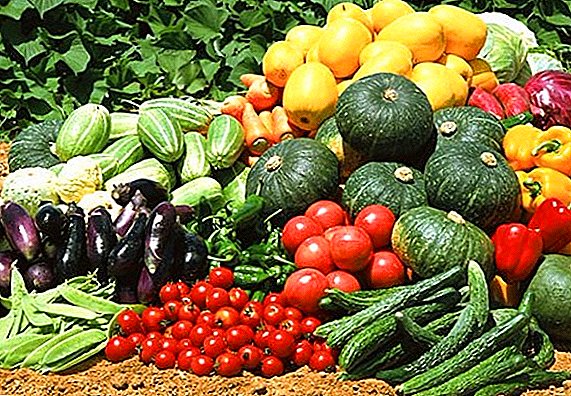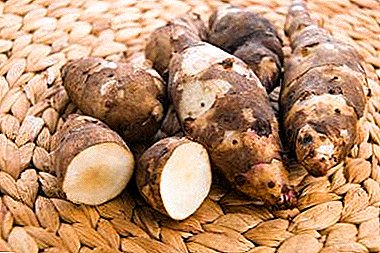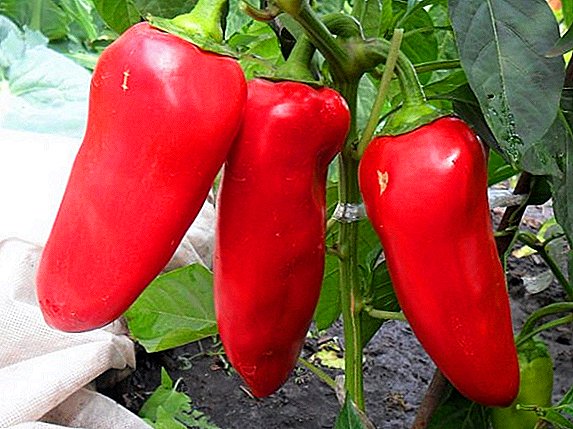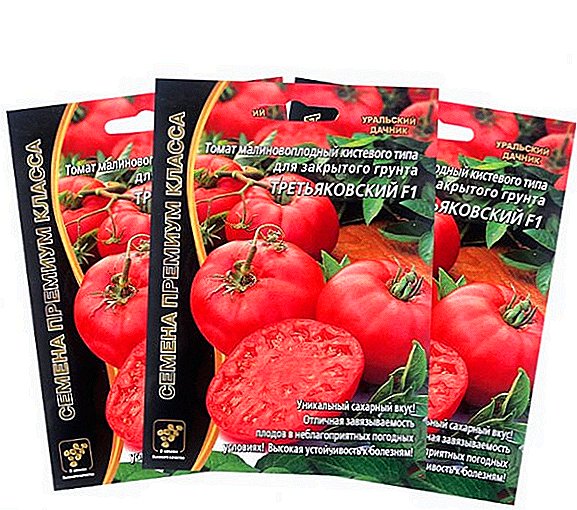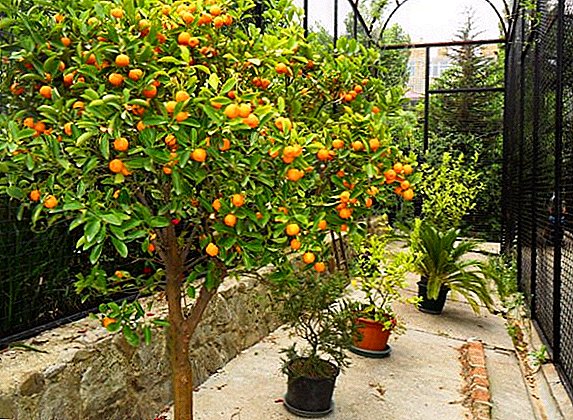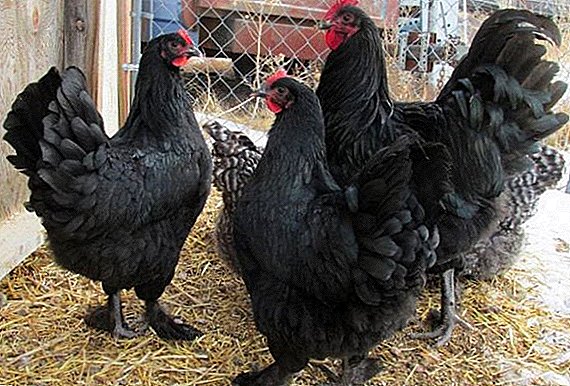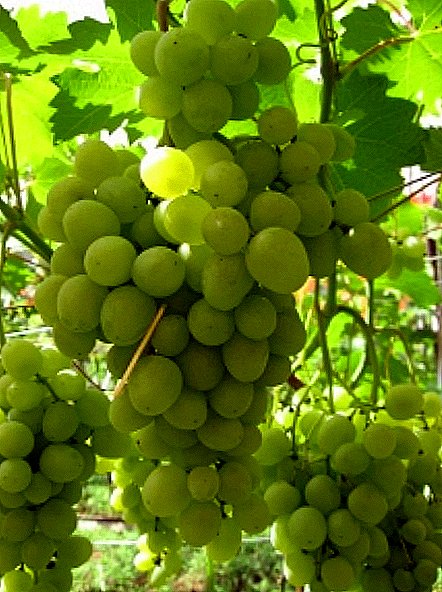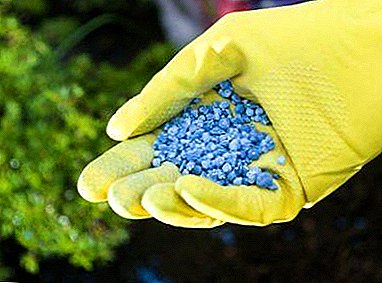
Tomatoes are very nutrient demanding, and they need fertilizer. Top dressing is an important stage in the struggle to get a good harvest.
Today, mineral fertilizers are sold in any specialty store. From the article you will learn about the advantages and disadvantages of mineral fertilizers, as well as the use of such simple supplements as: potassium, potassium sulfate, boric acid.
Consider what are the complex fertilizer for tomatoes, what are organic fertilizers.
Presents the recommended scheme for making dressings for tomatoes.
What it is?
Mineral fertilizers are supplements that contain various substances, such as:
- magnesium;
- manganese;
- calcium;
- sulfur;
- zinc and others.
But most of all tomatoes need 3 minerals:
- nitrogen;
- potassium;
- phosphorus.
Mineral complex fertilizers contain basic and additional substances. In the simple - only one main trace element, because such compounds are used in a mixture with others, or in order to prevent a shortage of a particular substance.
Important! It should be borne in mind that you need to feed only in the bite area, otherwise the plant will begin to rot and will not give a good harvest.
Advantages and disadvantages
 The advantages of mineral fertilizers include:
The advantages of mineral fertilizers include:
- high and balanced nutrient concentration;
- possibility of use for any type of soil;
- use a small amount.
Using such mixtures, you can adjust the size and quality of the crop. The downside is that:
- the price of mixtures is quite high;
- overabundance leads to the death of plants;
- they must be used systematically.
Benefit
Mineral fertilizers containing nitrogen help plants during their growth and development. They are advised to apply before flowering begins. They accelerate the growth of shoots and leaves. But it must be remembered that with an excess, the culture will grow quickly, tomatoes will acquire unusual shapes, spots will appear on them, taste will decrease significantly.
Nitrogen fertilizers include:
- ammonium nitrate;
- urea;
- ammonium sulfate;
- urea;
- ammonium sulphate.
Potassium-containing mineral fertilizers have a positive effect on the root system. Thanks to these additives:
- inside the tomatoes do not appear green streaks;
- increases plant immunity;
- improves the taste of the fruit.
In phosphorus tomatoes need in the period:
- growing seedlings (details about when and how to feed tomato seedlings, read here, and from this article you will learn how to fertilize tomato seedlings with the help of folk remedies);
- picks (about how to fertilize tomatoes before and after picks can be found here);
- landing in the ground.
Simple dressings for tomatoes and their use
Simple mineral fertilizers are inexpensive. The advantage of nitrogen, potash and phosphate dressings is that the gardener can regulate the amount of substances.
Potassium
 Potassium fertilizers are introduced into the soil at different stages of tomato cultivation. It is undesirable to use potassium salt and potassium chloride. These fertilizers have a bad effect on the development and taste of tomatoes.
Potassium fertilizers are introduced into the soil at different stages of tomato cultivation. It is undesirable to use potassium salt and potassium chloride. These fertilizers have a bad effect on the development and taste of tomatoes.
In the fall, you can use potassium chloride to make chlorine wash out of the soil. Potassium salts are recommended.which do not contain chlorine: potassium sulfate or potassium sulfate.
Potassium sulfate
 Potassium sulfate is considered the best fertilizer for tomatoes. It is a yellow powder in the form of small crystals that dissolve easily in water. Such granules also contain:
Potassium sulfate is considered the best fertilizer for tomatoes. It is a yellow powder in the form of small crystals that dissolve easily in water. Such granules also contain:
- iron oxide and sulfur;
- calcium;
- sodium.
These components increase the growth and yield of tomatoes. Potassium sulfate is recommended for acidic soils.. Diluting it with water can be sprayed directly on the stems and leaves of tomatoes.
Boric acid
 Boric acid can be used to process tomato seeds, spray plants, and place in the wells before planting seedlings in open ground.
Boric acid can be used to process tomato seeds, spray plants, and place in the wells before planting seedlings in open ground.
When you make a solution of acid directly under the roots of the tomato nutrients through them go to the leaves. Spraying the solution directly onto the green parts is more efficient..
To prepare a solution of boric acid, it is necessary to correctly calculate the ratio of the components: 1 g of the drug to 1 l. water.
Dilute the drug should be in hot water, and feed cooled.
Ready complex feeding
The most effective complex fertilizers are:
- Diammofosk;
- Ammophos;
- Nitroammofosk.
Diammofosk contains 26% of potassium and phosphorus, 10% of nitrogen, and various macro and microelements.
The advantage of this fertilizer is that it dissolves easily. You can bring it into the ground when it is digging. Norm 30-40 g per 1 m2 ground. You can water the roots of the bushes. To do this, 1-2 teaspoons of Dimmofoski dissolved in a bucket of water, this solution is enough for 1 m2.
Ammophos contains slightly more than 10% nitrogen and 50% phosphorus. There is no chlorine in it. This fertilizer has a good effect on the root system of the tomato and contributes to the speedy ripening of the fruit. It can be diluted, then watered the root system of the bushes, or scattered dry with the distance from the trunk should be more than 10 cm. Plus Diammofoski and Ammophos is that there are no nitrates in these compounds.
Nitroammofoska is a granular gray fertilizer, in which the main trace elements by 16%. This dressing is highly soluble in water. Fertilizer increases the yield of tomatoes by 30%, and in some cases - 70%. Application rate - 30-40 gr. on 1 m2. You can make dry when digging the ground or feed them the roots.
In nitroammofosk there are nitrates that can accumulate in tomatoes. If the rate of its introduction will be increased, the taste and benefits of eating such tomatoes is significantly reduced.
Organo-mineral
Organic mineral fertilizers are a mixture of organic matter, for example, infusion of chicken manure or slurry, and simple mineral substances. Tomatoes such top dressing is acquired quickly. Organic fertilizers are environmentally friendly..
They improve the composition of the soil and are in the form:
- dry mixes;
- granules;
- solutions.
Most often for dressing of tomatoes they use humates - a natural substance in the form of an extract from:
- silt;
- manure;
- peat
In the humates of sodium and potassium in addition to the main substance is present:
- complex of mineral substances;
- beneficial bacteria;
- humic acid.
Thanks to the components present, fertility and soil quality are improved, and tomato roots warm and grow faster. When using humates increases the yield. This drug is used at different stages of the growing season. In its solution, you can soak the seeds, water the seedlings and planted plants. On a bucket of water is taken 1 tbsp. spoon of humate.
 Feed the seedlings and already grown tomatoes after planting can be organic-mineral nutrition Malyshok. It helps plants avoid stress during transplantation, improves root development.
Feed the seedlings and already grown tomatoes after planting can be organic-mineral nutrition Malyshok. It helps plants avoid stress during transplantation, improves root development.
In detail about the features, pros and cons of such ready-made dressings as Malyshok, Red Giant, Mag Bor and others, we told here.
If you soak tomato seeds in a solution of this fertilizer, they will grow better and faster. To prepare, add 100 ml of Malyshok drug to a bucket of water.
Organic fertilizer Senor Tomato has a positive effect on the process of formation of ovaries, helps to improve the taste of fruits. Plants get a lot of potassium and a limited amount of nitrogen, so they do not fatten, and are fully focused on giving a good harvest. Therefore, this type of drug is especially effective when applied in the second half of cultivation. On a bucket of water you need to take 5 tbsp.
Scheme of use
Mineral fertilizers are recommended to use as follows.
After 2-3 leaves appear on the seedlings of tomatoes, fertilizing is carried out with complex fertilizer. This can be Baby or Nitroammofosk.
Potassium fertilizer and phosphorus seedlings need to be fed 7 days before they plan to plant tomatoes in the greenhouse or in the open ground (about the first and subsequent dressings of tomato seedlings, read here, and from this article you will learn about the best fertilizers for seedlings and greenhouse tomatoes. ). They should be fertilized in the soil for the first time 10 days after planting, since the plants need to grow leaves, it is best to use nitrogen-containing fertilizers.
Such feeding is carried out 1 time in 10 days.. As soon as the flowers appear and the ovaries need to apply potash fertilizers. Tomatoes need such complex feedings until vegetation is completed.
Even the most fertile soil without the use of mineral fertilizers will not give a good crop of tomatoes. The fact is that plants deplete the earth by consuming the substances in it, so they must be regularly fed. Only properly fertilized bushes will delight the owner with a large number of tasty and healthy tomatoes.



